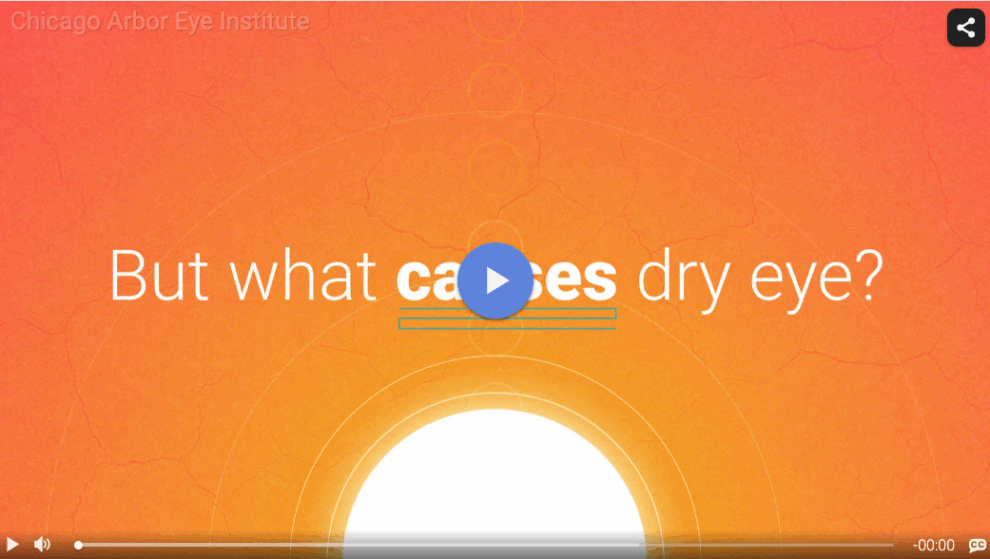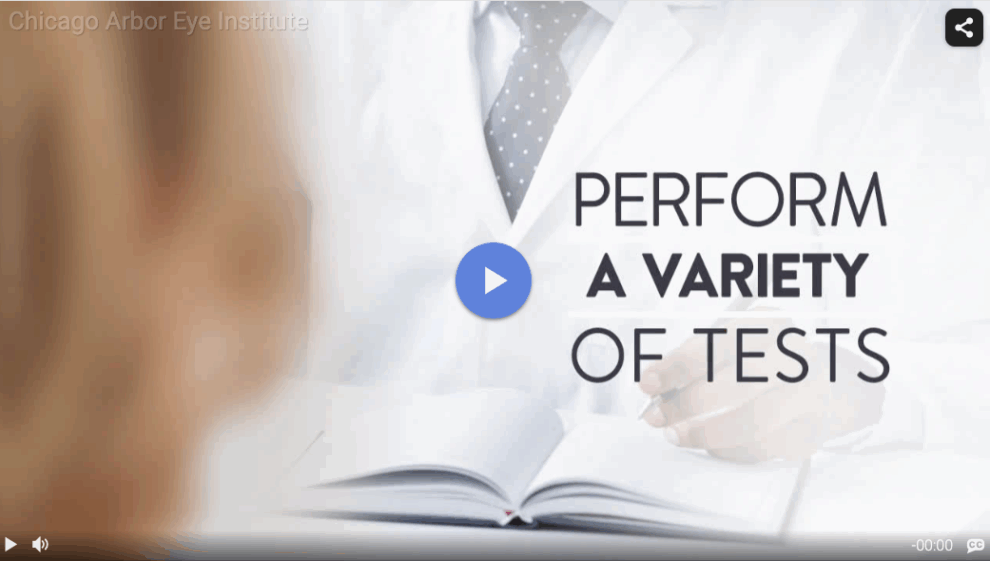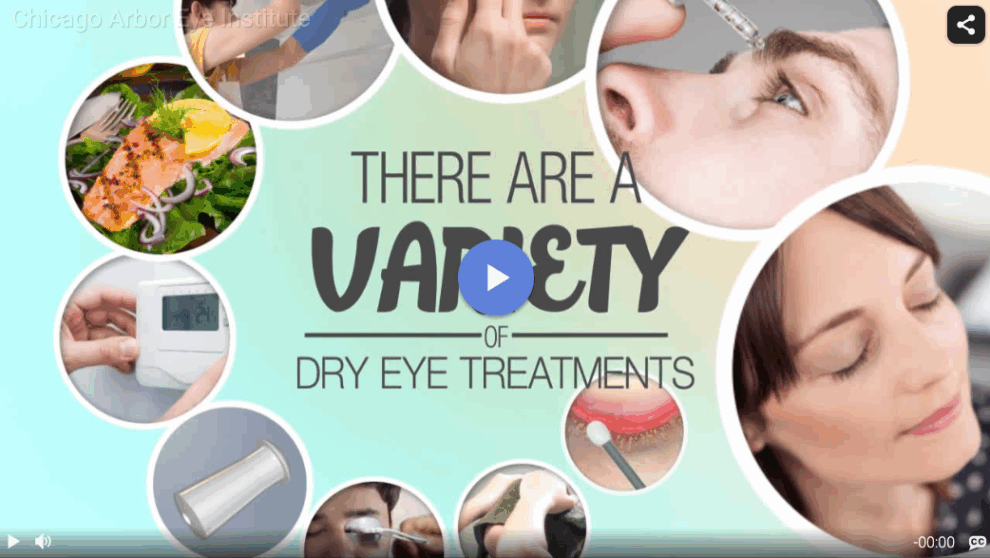Dry Eye
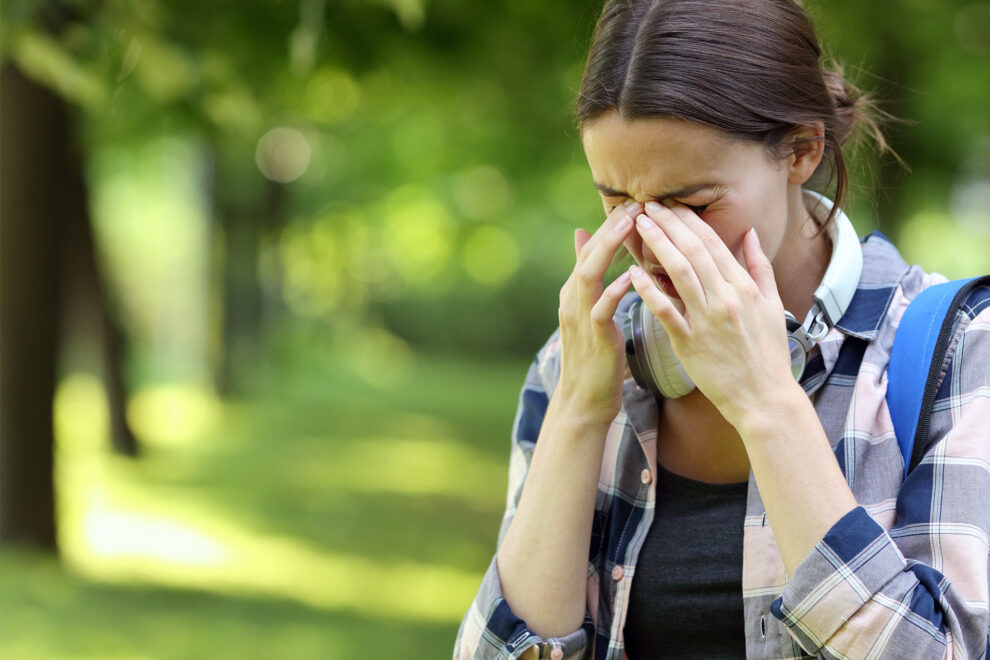
If you have dry eyes, you may also have other symptoms like watering, itching, or eye fatigue. However, the condition can make more sense once you know the eye makes two kinds of tears.
Two Type of Tears
Lubricating Tears
The first kind is lubricating tears. Lubricating tears are produced slowly throughout the day.
These tears have an exact balance of components, including oil, water, mucus, and necessary proteins and antibodies. This precise balance of components sustains and preserves the front surface of your eye.
Reflex Tears
The second kind of tear is a reflex tear. Reflex tears don’t lubricate the eyes very much.
Instead, their value lies in their ability to flood the eye with tears if irritation or a sudden injury occurs. You may produce reflex tears in situations like getting something in your eyes, dicing onions, being in a smoky environment, or accidentally scraping or scratching your eye.
When produced, reflex tears cannot be handled by the tear drainage system, causing them to spill onto your cheeks. However, another cause of reflex tears is if your eyes become irritated from a lack of lubricating tears. If your eyes cannot produce enough lubricating tears, this is a symptom of having dry eyes.
What are the Signs of Dry Eyes?
You may have dry eyes if you have symptoms like:
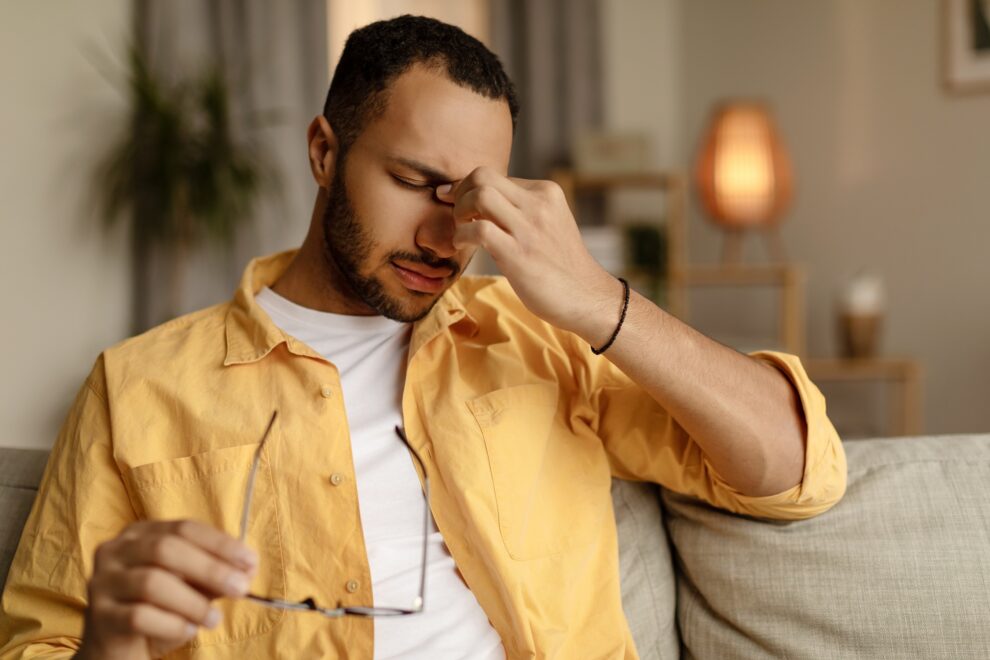
What Causes Dry Eyes?
Causes of dry eye are varied and can include:
Getting Older
As you age, you may notice that your eyes feel dryer. This can occur because glands in your eyelids start producing less oil, allowing your tears to evaporate more quickly than they should. As a result, your eyes will be too dry.
Health Conditions
Certain health conditions like Sjogren’s syndrome, Parkinson’s, and lupus can cause dry eyes.
Hormonal Changes
You may notice that your eyes feel more dry if you’re going through hormonal changes like menopause.
Prescription Medications
Some prescription medications, such as antidepressants, high blood pressure medications, and antihistamines, may cause dry eyes as a side effect. Let your primary care physician know if you’re concerned about dry eyes.
Dry or Windy Environments
If you’re in a hot, windy, or dry environment, this may cause dry eyes. You may also notice dry eyes if you’re around air-conditioning, smoke, or at a higher altitude.
Looking at Digital Devices
Spending a lot of time looking at digital devices may make your eyes feel dry. Reading on your phone, watching TV, or enjoying a movie on your tablet can all contribute to dry eyes if you do them for a long time without a break.
How to Diagnose Dry Eye
If you think you could have dry eyes, the best thing you can do is see your eye doctor at Chicago Arbor Eye Institute. Diagnosing dry eyes will involve your eye doctor examining your eyes with magnifying instruments.
They will also measure the rate of your tear production and how long it takes for your tears to evaporate in between each blink. Your eye doctor will also look at how healthy your tear film is.
Treating Dry Eye

There are many ways of treating dry eyes, and how your Chicago Arbor Eye Institute ophthalmologist chooses to treat them will depend on the severity of your symptoms and their root cause. Dry eye treatment options offered at Chicago Arbor Eye Institute include:
Prokera
Prokera is a biological corneal bandage that helps heal the cornea and provides lasting relief for patients suffering from severe dry eye. Prokera is FDA-approved and uses amniotic membrane technology to reduce inflammation.
It also minimizes scarring while supporting the eye’s ability to heal naturally. If you have moderate to severe dry eye symptoms and haven’t found relief with other treatments, Prokera may be worth considering, as it’s particularly effective for these patients.
Punctal Plugs
Punctal plugs are tiny devices inserted into tear ducts to help prevent tears from draining out too quickly. Keeping tears on the surface of your eyes longer ensures enough moisture and helps relieve dry eye symptoms.
Punctal plugs come in temporary and permanent options, depending on the severity of your dry eye symptoms and specific needs.
Neox Flo
Another treatment that uses amniotic membrane therapy is Neox Flo. This advanced treatment provides much-desired relief for patients with severe dry eye symptoms.
Once applied to the surface of the eye, Neox Flo helps promote healing while diminishing inflammation, promoting healing, and restoring the function of a healthy tear film. It uses a cryopreserved amniotic membrane extract, which has many naturally occurring healing factors and growth proteins.
By harnessing the regenerative properties of amniotic tissue, Neox Flo is a powerful way of treating chronic dry eye, especially if you have yet to see the results you want from more conventional treatments.
Serum Tears
Serum tears are a highly personalized dry eye treatment with your blood serum. These custom-made eye drops mimic your natural tears and provide superior moisturization, lubrication, and nourishment to the surface of your eye.
Serum tears are an excellent choice for patients with severe dry eye or if you haven’t found relief using over-the-counter artificial tears.

